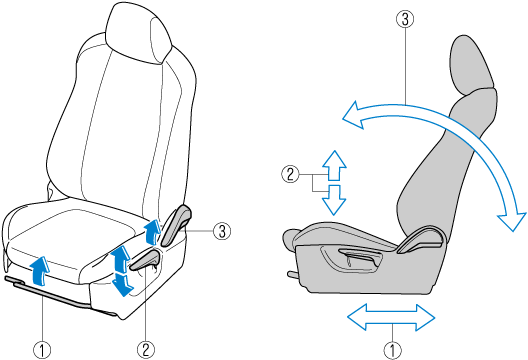

Seat Operation

 Seat Slide
Seat Slide
To move a seat forward or backward, raise the lever and slide the seat to the desired position and release the lever.
Make sure the lever returns to its original position and the seat is locked in place by attempting to push it forward and backward.
 Height Adjustment (Some Models)
Height Adjustment (Some Models)
To adjust the seat height, move the lever up or down.
 Seat Recline
Seat Recline
To change the seatback angle, lean forward slightly while raising the lever. Then lean back to the desired position and release the lever.
Make sure the lever returns to its original position and the seatback is locked in place by attempting to push it forward and backward.


